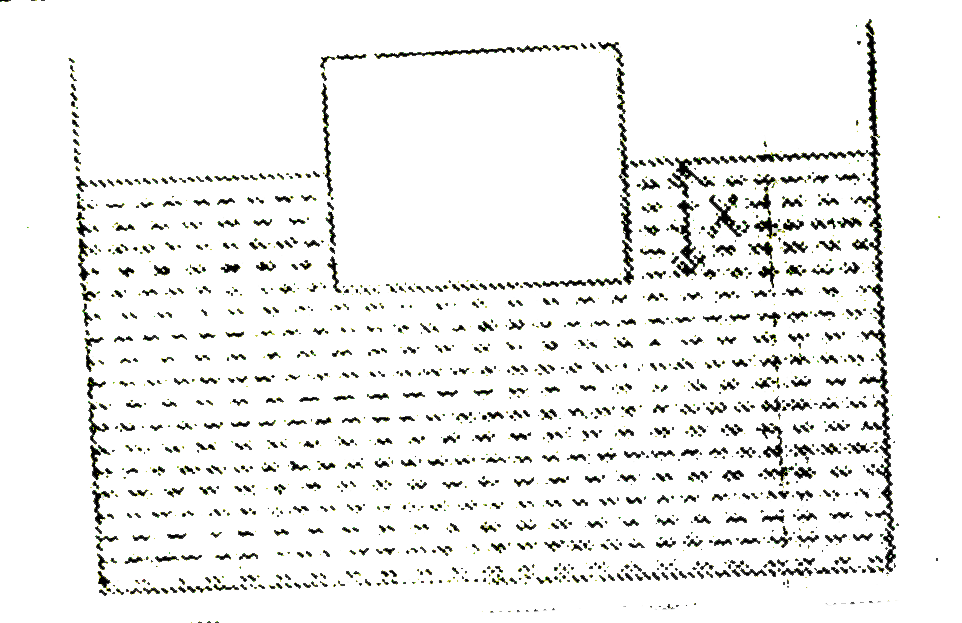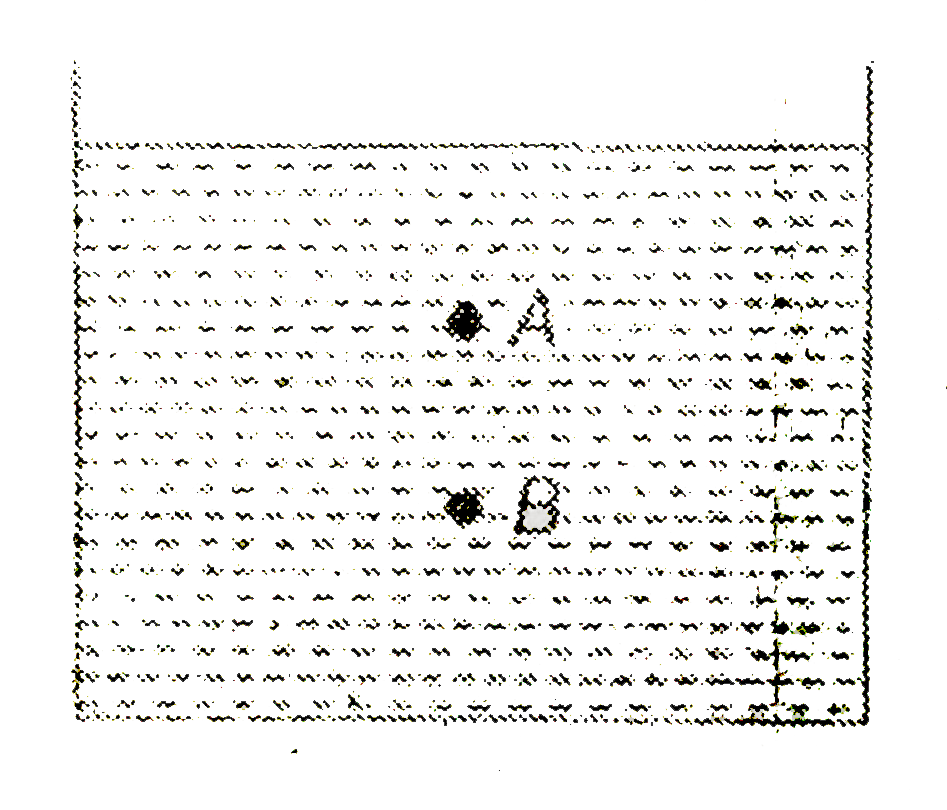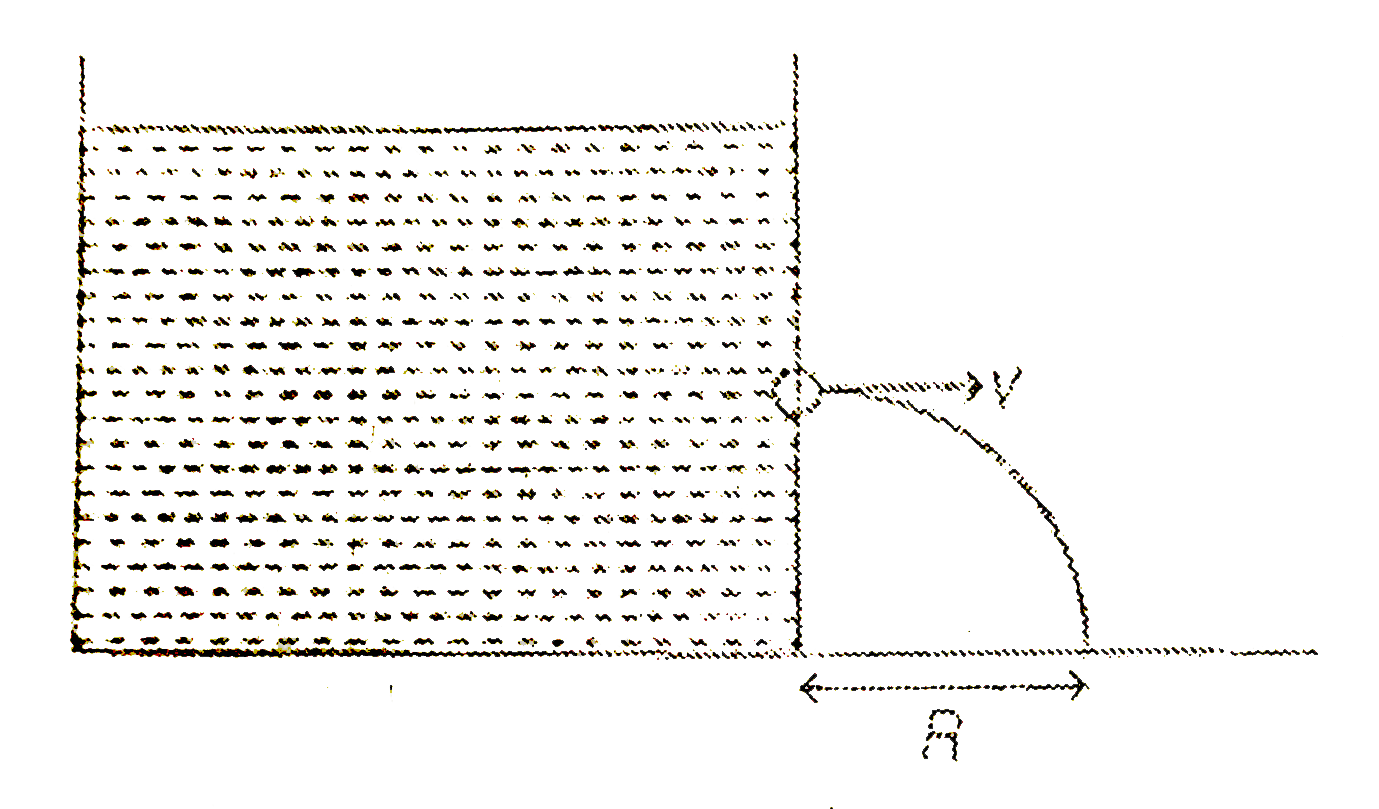A solid is immersed completely in a liquid. The temperature coefficients of volume expansion of solid and the liquid are γ1 and γ2(<γ1). If temperatures of both are increased, then match the following.
∣∣
∣
∣
∣
∣
∣∣Table-1Table-2(A)upthrust on the solid will(P)increase(B)apparent weight of the solid will(Q)decrease(C)fraction of volume immersed in(R)remain samethe liquid if allowed to float will∣∣
∣
∣
∣
∣
∣∣
The correct Answer is:A, B, C
Step by step video, text & image solution for A solid is immersed completely in a liquid. The temperature coefficients of volume expansion of solid and the liquid are gamma_(1) and gamma_(2) (lt gamma_(1)). If temperatures of both are increased, then match the following. |{:(,"Table-1",,"Table-2"),((A),"upthrust on the solid will",(P),"increase"),((B),"apparent weight of the solid will",(Q),"decrease"),((C),"fraction of volume immersed in",(R),"remain same"),(,"the liquid if allowed to float will",,):}| by Physics experts to help you in doubts & scoring excellent marks in Class 11 exams.
Topper's Solved these Questions
- BOOK - DC PANDEYCHAPTER - PROPERTIES OF MATTEREXERCISE - Integer8videos
PROPERTIES OF MATTER
- BOOK - DC PANDEYCHAPTER - PROPERTIES OF MATTEREXERCISE - Comprehension32videos
PROPERTIES OF MATTER
- BOOK - DC PANDEYCHAPTER - PROJECTILE MOTIONEXERCISE - Level - 2 Subjective10videos
PROJECTILE MOTION
- BOOK - DC PANDEYCHAPTER - RAY OPTICSEXERCISE - Integer type q.15videos
RAY OPTICS
Similar Questions
A cube is floating in a liquid as shown in figure. Match the following.

∣∣ ∣ ∣ ∣ ∣ ∣ ∣ ∣ ∣ ∣∣Table-1Table-2(A)If density liquid(P)increasedecreases x will(B)If size of cube is(Q)decreaseincreased x will(C)If the whole system is(R)remain sameaccelerated upwards xwill∣∣ ∣ ∣ ∣ ∣ ∣ ∣ ∣ ∣ ∣∣View SolutionThere are two point A and B inside a liquid as shown in figure. Now the vessel starts moving upwards with an acceleration a. Match the following.

∣∣ ∣ ∣ ∣ ∣ ∣ ∣∣Table-1Table-2(A)Pressure at B will(P)increase(B)Pressure difference(Q)decreasebetween A and B will(C)Upthrust on an object(R)remain sameinside the verssel will∣∣ ∣ ∣ ∣ ∣ ∣ ∣∣View Solution
Knowledge Check
- Question 1 - Select One or More
The loss of weight of a solid when immersed in a liquid at 0∘C is W0 and at t∘C is 'W'. If cubical coefficient of expansion of the solid and the liquid are γs and γ1 then W=
AW0[1+(γs−γl)t]BW0[1−(γs−γl)t]CW0[1+(γl−γs)t]DW0[1−(γl−γs)t] - Question 2 - Select One
A solid with coefficient of linear expansion aplha just floats in a liquid whose coefficient of volume expansion is γ . If the system is heated, the solid will
Asink in all casesBcontinue to float in all casesCsink if γ>3αDsink ifγ<3α - Question 3 - Select One
In an isotropic medium, the coefficients of linear expansion of a solid are α1,α2andα3 in three mutually perpendicular directions. The coefficient of volume expansion for the solid is
Aα1−α2+α3Bα1+α2+α33Cα1+α2+α3DNone of these
A solid ball is immersed in a liquid. The coefficient of volume expansion of ball and liquid are 3×10−6 per/C and 9×10−6 per ,∘C respectively. Find the percentage change in upthrust when the temperature is increased by 25∘C
View SolutionA solid cube is first floating in a liquid. The coefficient of linear expansion of cube is α and the coefficient of volume expansion of liquid is γ. On increasing the temperature of (liquid + cube) system, the cube will sink if
 View Solution
View SolutionA piece of metal floats on mercury. The coefficient of volume expansion of metal and mercury are γ1andγ2, respectively. if the temperature of both mercury and metal are increased by an amount ΔT, by what factor does the frection of the volume of the metal submerged in mercury changes ?
View SolutionA piece of metal floats on mercury. The coefficients of volume expansion of the metal and mercury are γ1 and γ2 respectively. If the temperatures of both mercury and the metal are increased by an amount ΔT, the fraction of the volume of the metal submerged in mercury changes by the factor............
View SolutionIn the figure shown, velocity of liquid which comes out is v, time of liquid to fall to ground is t and range on ground is R. If the vessel is taken to a mountain, match the following.

∣∣ ∣ ∣ ∣∣Table-1Table-2(A)V(P)will increase(B)t(Q)will decrease(C)R(R)will remain same∣∣ ∣ ∣ ∣∣View Solution

